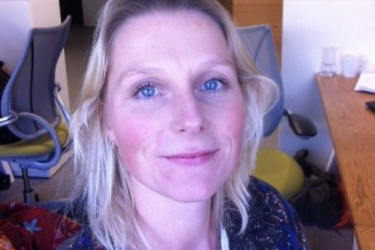International standards for special collections

Faye Holst
Two librarians from the National Library of Scotland share their experiences with Faye Holst
Reaching people via the internet has revolutionised everything we do, from ordering a takeaway to spreading news and views to world-wide audiences. Previously, the first port of call in the search for specialist knowledge was a library. Now, with the world-wide web, knowledge is increasingly democratic and open.
However, in an era of increasing expectations and decreasing budgets, disclosing and disseminating knowledge online in a cost-effective way has become a daily challenge for many librarians.
As Gill Hamilton, digital access manager at the National Library of Scotland, says: ‘People often want our content, which is great, but it takes us weeks and weeks to bring together and collect the content. While we’d like to participate in projects that make our collections more visible, it can be a real challenge to actually make it happen.’
Most collections need reformatting and aligned with widely recognised standards that ensure collections are compatible with other institutions’ content banks and digital infrastructure.
‘There is a myriad of different digitisation programs out there and the standards for storing digital collections are all over the place at the moment,’ says Sarah Ames, digital scholarship librarian at the National Library of Scotland.
To help university libraries expose their collections to larger audiences, Jisc has partnered with global research and teaching platform, JSTOR, which provides access to more than 12 million academic journal articles, books, and primary sources in 75 disciplines.
The partnership gives UK higher education institutions (HEIs) the opportunity to add their digitised content to JSTOR’s Open Community Collections program, which enables libraries, museums, and cultural organisations around the world to reach a global audience of academic teachers and students.
‘When we brought our in-house standards in line with international standards last year, we did so for digital scholarship purposes, so that researchers could use our data in machine learning and data mining exercises. We never thought that internationalisation of our content would enable us to join international programmes,’ Ames says.
Hamilton adds: ‘We’re always interested in extending the reach of our collections because people don't necessarily come to the National Library of Scotland to find things. But by putting our content on a major platform like JSTOR, which is used by many researchers and academics, will really help make our collection more visible.’
The National Library of Scotland has uploaded six collections on the JSTOR platform. The Encyclopaedia Britannica (1768-1860), papers from the Edinburgh Ladies’ Debating Society, A Medical History of British India, Scottish School Exam Papers 1888-1963, materials from geographical dictionary the Gazetteers of Scotland, and editions of The Spiritualist newspaper,
The choice to include these collections in the Open Community Collections was a practical one, explains Ames: ‘Unfortunately, what we make available openly often comes down to practicalities. Copyright assessment is massively time-consuming and we had already done that for these collections.
‘We have a digitisation selection schedule, which factors in the library's priorities, and we always look to highlight diverse audiences, or materials that are particularly focussed on Scottish subjects. But, ultimately, the amount of material we can make available through initiatives such as the community collections programme is very small, which is always really frustrating,’ continues Ames.
A 2012 survey conducted by Research Libraries UK, shows that ‘hidden’ collections remain an immense problem for UK libraries. The survey found that 18.5 per cent of materials held by libraries are uncatalogued.
Gaining maximum exposure is import, says Ames: ‘We want our collections to be featured on as many platforms as possible. Each platform has different audiences and there's no point having collections if people can't access them and can't use them.’
The work undertaken by the National Library of Scotland highlights a shift in the library strategy, concludes Hamilton: ‘Our old strategy was all about making more content available digitally. We are working towards making one third of all our content digitally available by 2025, which is the library’s 100-year anniversary. Our new strategy is all about ‘good reaching people’.
‘With that in mind, we’re now looking to make our collections available for platforms such as Wikipedia. It’s great to reach millions of researchers through JSTOR, but if we are to reach the rest of the world, we need those sorts of platforms, too.’
Faye Holst is






